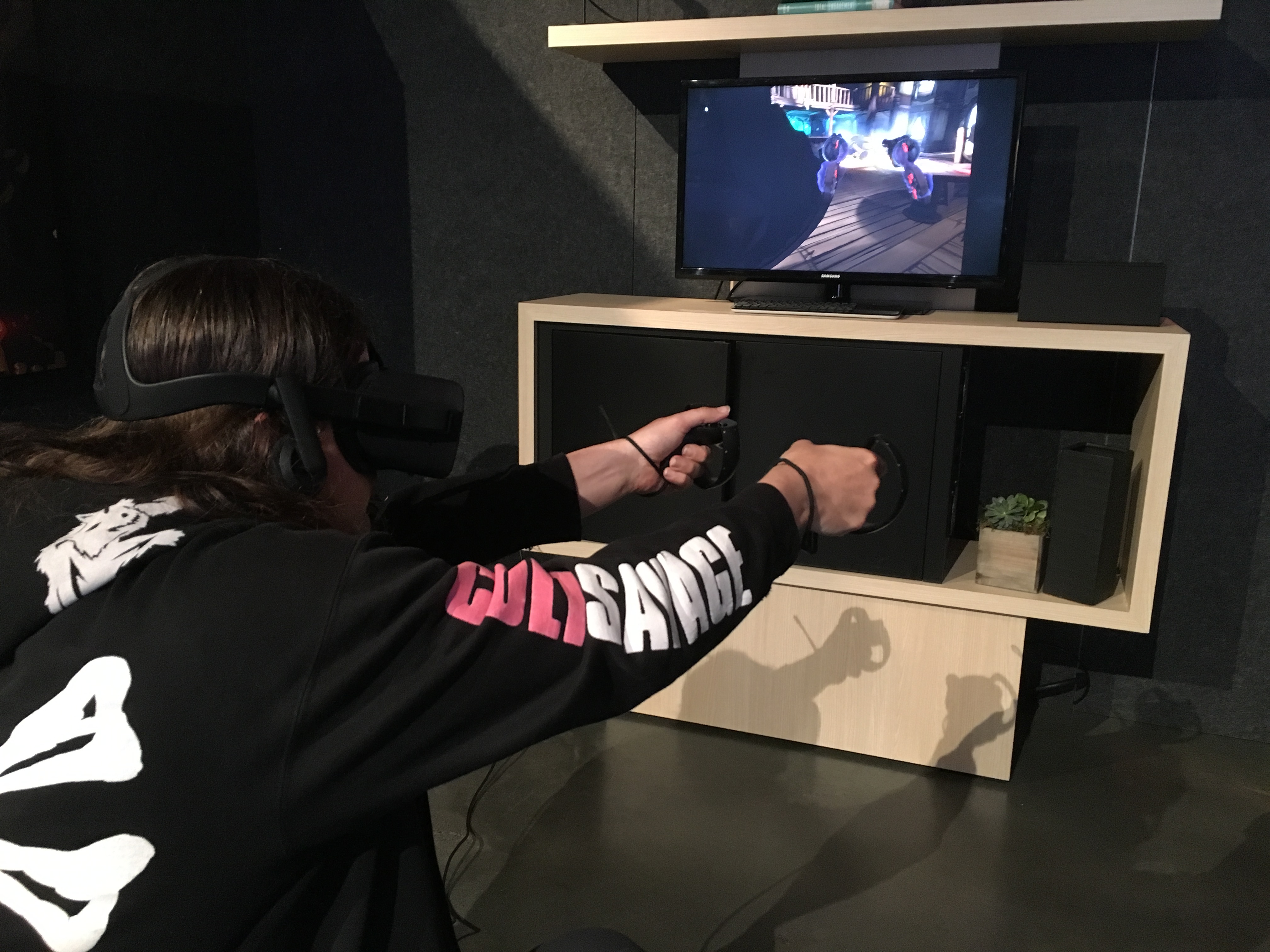When Hype Cycles Die…
I make no bones about being an advocate for virtual reality, but I suspect that talking to me during the week of GDC was not particularly the most cheerful experience for many VR developers. At a time when virtual reality is being pushed hard, and it's getting a ton of coverage and enthusiasm from the press and developers behind closed doors—I heard about a GDC talk this year where gamification guru Jesse Schell (I Expect You to Die) suggested that virtual reality would be in a billion homes by the late 2020s—I was expressing a much more pragmatic viewpoint. With the hype-cycle now pushing expectations beyond what's possible, VR is in for a comedown.
Virtual reality is exciting, it's immersive, it has a sense of presence that is beyond the best experience of a 3D movie, because you feel like you are literally in the space. Games that marshal the use of the environmental limitations, like the sit-down VR titles that place you in a cockpit, mech, or suit (ADR1FT, Rigs, Time Machine, EVE: Valkyrie) or an on-rails arcade shooter (The London Heist, Dead and Buried) do very well within the space. Room VR—where you can walk and interact in a physical space—is proving great for adventure titles (The Gallery) and puzzle games (Fantastic Contraption). There are obvious applications for RTS (Airmech: Command), CCG (Dragon Front), and board-game genres, allowing the player to interact directly with living moving pieces in strategy and tactical environments. At its most standard it offers an animistic god-like view of third-person action-platformer characters (Chronos, Lucky's Tale, Edge of Nowhere).
However, Neuromancer and Ghost in the Shell, it's not. Virtual reality is presently the Wii, Kinect, and Playstation Move Versions 2.0.

That might be the best thing for VR though, at this stage. It builds off of technology that we already have and have been using for longer than most people realize; the Wii-mote for instance, uses a souped-up version of the same tech that the Nintendo Power Glove used. So much of early VR, and especially cell phone VR titles like those in Samsung's Gear VR or Google Cardboard, is using the tech in a way that's similar to 3DS novelty AR titles like Face Raiders, or the Wii U GamePad minigames from Nintendo Land and Game & Wario, where the headtracking is analogous to the device movements of the 3DS and Wii U GamePad respectively. Those aren't exactly killer apps, and if VR wants to grow and develop into a strong platform, it has to do more than that. It must be more than just be a portal to play the same kinds of games we already have, but in VR.
With that in mind, and the current state of the technology, but most specifically the cost of the tech; the hype-machine is set to run out of gas. I believe VR will be what the hype is in 5-10 years, but the mitigating factor of the cost especially is going to keep the general consumer from experiencing gaming VR except in limited trial circumstances like at cons or phone-VR options. The lowest cost VR headset solution I've seen in-person is Razer's open-source OSVR Hacker Dev Kit, at $299, where the enterprising PC VR engineering-enthusiast is encouraged to open up the device and upgrade it at will. But the initial specs are lower than the other headsets, including a target framerate of 60fps, which is low enough that some people experience nausea, causing major developers to target 90fps instead.

With Playstation VR at $500, the Oculus Rift at $600, and the HTC Vive at $800—in addition to the necessary hardware—the minimum cost of entry for every device is likely beyond what the average gaming consumer is likely to spend. This makes VR a luxury product, beyond even the price of owning a console at launch. It's more like owning a curved-screen 4K television a year or two ago; in a world where many lower end consumers are finally settling in to owning HDTVs, mass-market adoption is incredibly unlikely. As this reality sets in, expect the gaming sphere to cool significantly on VR for the next few years, until the devices come down massively in price as manufacturing processes get better.
However, that stated, the cost of virtual reality is not necessarily out of step with other early-adopter technologies in the entertainment sphere. Adjusted for inflation, the 1977 $200 cost of the original Atari 2600 rounds out to about $800. As far as consumer products go when matched with standard-of-living, that's not something the general populace can afford and is functionally a luxury item as well. I didn't mention 4K televisions for no reason either, as they have also come down massively in price, down into what had exclusively been the HDTV range. 4K is now a prized setting and benchmark for PC gaming output by developers, and on this site PC gamers have written in comments about their 4K output. It's likely that VR will enter this space until it comes down in price.
Where VR is blowing up, though, isn't in games at all, but in the 360 video space. I don't have any metrics or statistics, but it's a safe bet to say that this is the space where VR is currently making its mark because it's the most accessible (cell VR, again) and because it's being used as a marketing tool to attract consumers to traditional media. While some are exceptional, like the Oculus-released LeBron James documentary short, Striving for Greatness, others are clearly designed as marketing media for simple VR devices—provided your cell phone has a large enough screen, you can buy a Google cardboard-compatible viewer for less than $10 on Amazon—for movies, games, and television on YouTube.

An advertisement at the local Sprint store.
Samsung is even offering Gear VR—Oculus's mobile VR solution in a partnership with the smart phone-maker—as a preorder bonus for S7 Galaxy and Edge phones. With this in mind, it's possible that the VR explosion won't be in the gaming space at all, but in a passive video one, on devices people already purchase out of necessity for their jobs and social lives. As it continues to grow and thrive there, it's likely that VR in gaming-centric online spaces will get a much less enthusiastic reception, as the devices deal with the inevitable launch woes, technical problems, and the standard mix of lukewarm launch titles.
I don't by any means think VR will fail, but I think the hype is now overextended, and we can expect a not insignificant backlash as the devices get into consumer hands, as they deal with the reality that VR is still reliant on game development language that hasn't caught up with the new format. That's what will ultimately sell people on gaming VR, and what's going to take more time potentially than the advances in tech that will put it on consumer heads. Until then, prepare to hear a lot about how VR is over-hyped and a poor gimmick following its launch.







